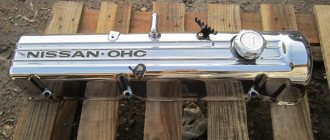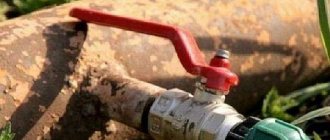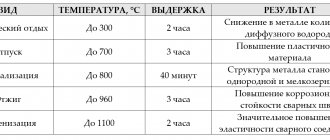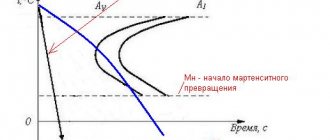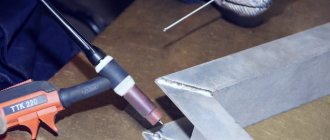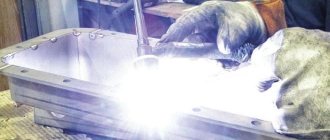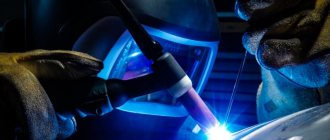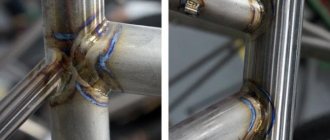To improve the performance of metal, many methods are used, one of them is chemical chrome plating. This procedure will help increase both the attractiveness of the products and their strength, and will also provide protection from the effects of temperature and corrosion.
Chrome plating refers to the process of plating metal materials with chromium. Chrome plating is not particularly labor-intensive, but before carrying out it it is necessary to carefully study all the nuances.
Chrome plating
Chrome plating is a galvanic process of applying a reflective layer to the surface of metal or plastic. To carry out hard galvanic chromium plating, great knowledge and understanding of the types of metal, setting the current strength and knowledge of the selection of electrolyte, anode and cathode for the galvanic bath are required. Particular attention should be paid to the selection of a current rectifier, since the success of the entire hard chrome plating process depends on it. Today, progress does not stand still and there is no need to have a lot of equipment and knowledge. For this process, the so-called “chemical metallization” is an excellent alternative; it is the starting point into the world of chrome plating, gold plating, nickel plating, etc.
Possible defects
Failure to comply with the technology leads to the formation of various defects in the chromium layer. To avoid this, you need to know the main reasons:
- non-compliance with temperature conditions;
- incorrect concentrations of solution elements;
- poor preparation of the working surface;
- violation of current supply parameters;
- the presence of foreign particles and impurities.
Due to the above reasons, defects such as low shine or its absence, pitting, brittle sediment, roughness, marks, veil, rough and dark spots, burnt, flaking, cracks, stripes, bubbles, peeling, missing fragments, dark gray color, appear. low deposition rate and dissipation ability of the electrolyte, black or brown film on the anodes.
Chemical metallization
Chemical metallization is the activation of silver nitrate on the surface of a product, followed by its passivation. Silvering of parts (chemical plating) does not completely replace hard chrome plating, but it has become firmly established in the automotive world and makes it easy to restore chrome surfaces or headlight reflectors. This type of chrome plating is easy to prepare and does not require additional knowledge in chemistry; the quality of the reflective layer depends primarily on careful surface preparation. The main advantage of chrome plating using chemical metallization is the ability to coat complex products and easily choose the color of chrome, since the final work is varnished with the addition of the desired pigment.
This article will be aimed at people who want to learn how to chrome themselves. The article will be divided into two parts; first of all, we will prepare the solutions to start work and find out what you need to buy.
Work order
For most chrome plating methods, the product will be coated in the following order:
- Cleaning from heavy contaminants and preparation. Removing excess oil, old coating, disconnecting moving parts of mechanisms, fastening products to equipment for coating.
- Degreasing. Removing the smallest parts of fat on the surface using solutions. There are several options: Chemical degreasing (washing powder), electrochemical, ultrasonic, etc.
- Pickling (for steel products). Removing rust and scale.
- Coating.
- Drying.
- Quality control.
Chemical chrome plating: technology and implementation at home
To improve the characteristics of products for various purposes, many methods are used, one of which is chemical chromium plating. This technology can significantly improve both the decorative characteristics of the product and its mechanical properties - strength and wear resistance.
This is what the wheel cap looks like after chemical chrome coating and subsequent polishing
General information
The thickness of the coating layer is usually small - from 0.2 to 0.8 millimeters (although there are products with a thicker layer). Any metals and their alloys (iron, cast iron, steel, aluminum, copper and others), as well as dielectrics (plastic, stone, wood, porcelain and others) can be chrome-plated.
You can coat dishes, jewelry, car or motorcycle parts, and furniture with chrome. In addition, chrome plating of parts and plastic performs the following important functions:
- Thermal and mechanical protection. Chrome has a dense structure and a very high melting point. Therefore, when heated, its chemical and physical structure does not change. During a mechanical shock, the substance also retains its structure, so chrome-plated parts have higher mechanical resistance.
- Anti-corrosion protection. From a chemical point of view, chromium is an inert substance. Under normal conditions, it does not come into contact with water and atmospheric air. Therefore, products with chrome coating do not corrode for a long time. Chromium also reacts reluctantly with acids, alkalis and salts.
- Restoring the strength of a spare part. In case of long-term use, small cracks and depressions appear in spare parts, which negatively affects their strength and reliability. Applying chrome plating can seal these cracks and dents, improving their practical use.
- Protects against dirt and increases reflectivity. The chrome coating reliably protects the part from dirt, dust and organic debris. People cover the spare parts of their vehicles so that their vehicles are better visible in the dark (usually discs, individual parts or the entire body are covered).
The essence of technology
The essence of chrome plating, performed using any technology, is that a layer of chromium is applied to the surface being treated, which can significantly improve both the decorative and mechanical properties of the part. The chrome coating gives the product the following qualities:
Industrial chemical chromium plating line
The most popular methods by which a layer of chromium is applied to the surface being treated are galvanic and diffusion. In contrast, chromium plating, performed chemically, does not require the use of special equipment and allows you to obtain high-quality, uniform and reliable coatings even on products with complex shapes. Chemical metallization (in particular, chrome plating) is performed using a special aqueous solution heated to a certain temperature.
The essence of chemical chrome plating is that chromium deposited on the surface being treated is reduced from a solution of its salts. This reduction reaction is made possible due to the fact that the solution for chemical chromium plating contains sodium hypophosphite. The presence of this particular substance in the solution is the main difference between chemical chromium plating and a similar process performed using an electrolytic solution.
Sodium hypophosphite - colorless crystals used for chemical chromium plating mainly of metal products, sometimes also of plastics
After chemical chrome plating, the finished coating turns out matte, which is clearly visible even from the video of this process. To give this coating a characteristic chrome shine, the product must be further polished. Meanwhile, the chrome layer obtained using this technology, although not highly decorative when compared with diffusion and electrolytic coatings, has higher quality and reliability. In particular, this coating contains phosphorus, which gives it strength and hardness.
Cathodic mechanical chrome plating (galvanic honing).
An analysis of modern literary sources covering the issues of intensification of chrome plating processes, as well as modern Russian chrome plating technologies, has shown that applying shiny chrome coatings to cylindrical parts or rod-type parts made from a standard sulfate electrolyte at current densities of 3000-6000 A/m2 and electrolyte temperatures of 45 -70 °C allows the technology of cathodic mechanical chromium plating (CMC) or galvanic honing. This technology was developed by specialists from the Federal State Unitary Enterprise “TsNIIM” (St. Petersburg).
KMH technology involves chrome plating of cylindrical parts with a simultaneous mechanical (abrasive) effect on the cathode surface, that is, combining the chrome plating process with honing or lapping the surface with special polishing elements. According to developers' estimates, the wear resistance of chrome coatings obtained using the CMC technology, compared with coatings obtained by standard chrome plating of cylindrical parts, increases by 2-4 times [4]. In addition, the use of cathodic mechanical chromium plating makes it possible to obtain thick-layer chrome coatings (thickness over 100 microns) with a roughness corresponding to high classes of surface finish (not lower than class 9) without intermediate mechanical treatment.
The essence of the galvanic honing process is a constant forced adjustment of the surface formation during the chrome plating process with polishing elements. This makes it possible to prevent the enlargement of irregularities with increasing thickness of the deposit on the surface being formed, to prevent uneven distribution of the coating over the thickness, and to preserve the fine-crystalline structure of the chromium deposit (maintaining the conditions of a flat growth front of the deposit). In other words, with the CMC technology, a forced “smoothing” of the forming and growing layer of chromium deposit is performed at the microscopic level.
The conclusions of KMH development specialists from the analysis of the main chromium plating technologies existing in Russia for cylindrical long parts of the “rod” type indicate the following:
- With standard chrome plating of cylindrical parts, in order to achieve the required class of surface finish, mechanical finishing of the surface on chrome is required (using expensive equipment), which, as a rule, reduces the performance characteristics of the chrome coating (burns, scuffs, cracks);
- With CMC, a coating is formed with a roughness corresponding to the class of surface finish that is 2-3 units higher than the initial finish of the substrate. With this technology, no further mechanical processing of chromium coatings is required, dendrite formation is prevented, and accordingly the high functional properties of chromium are preserved.
The technological parameters and composition of the electrolyte of the standard technology for chrome plating of parts do not contradict the principles of the KMH technology. It should be noted that galvanic honing is not a simultaneous combination of the process of chrome plating and surface grinding, since the lapping blocks are constantly moved along the cathode surface, periodically leveling and polishing the cathode surface, without abrading part of the chromium layer as during grinding.
Preparation for the procedure
Due to its simplicity, chemical chrome plating does not require significant financial costs. It is not difficult to perform chrome plating at home using this technology; to do this, it is enough to carefully study the theoretical material and watch the corresponding video.
However, it should be borne in mind that the chemicals used for chrome plating using this technology emit toxic fumes that are dangerous to human health, so safety regulations must be strictly followed.
During the chemical chrome plating process, contact of solutions with unprotected areas of the body should be avoided.
Such chrome plating at home should only be carried out in non-residential premises in which effective ventilation is organized. In addition, it is necessary to use personal safety equipment:
Solutions for chrome plating, performed using chemical technology, as well as for carrying out all auxiliary technological operations, are prepared on the basis of distilled water. The reagents used in this case must be marked with the letter “C”, which indicates their chemical purity. The containers in which working solutions are prepared can only be glass or enamel.
Reagents for chemical chromium plating
Before chemical chrome plating, the surface of the product should be thoroughly cleaned and degreased. The reliability and quality of chrome plating are largely determined by the thoroughness of these procedures. If the surface to be treated is sufficiently dirty and there are remnants of the old coating or traces of corrosion on it, then it is treated using a sandblasting machine or emery cloth, achieving a metallic shine. Preliminary grinding and polishing of the product allows you to create a more reliable and high-quality chrome coating. After performing these technological procedures, the surface to be treated is degreased using an aqueous solution containing the following components:
Washing and degreasing parts before chrome plating
To perform degreasing, the resulting mixture is heated to 60–100° and only after that the product being treated is lowered into it. Depending on the degree of surface contamination, the product is kept in a heated solution from a quarter of an hour to 60 minutes. To improve the adhesion of chromium to the surface being treated, you can additionally perform pickling, which is carried out in a solution of hydrochloric and sulfuric acids.
It should be borne in mind that the cleaner and smoother the surface to which it is applied, the more durable the chrome coating will be.
If it is necessary to perform chemical chromium plating on aluminum, a product made of this metal is also subjected to zincate treatment, after which it is washed. Before chemical chrome plating of steel alloy parts, a layer of copper is first applied to their surface. For this, an aqueous solution is used, including the following components:
Main defects and removal of low-quality chrome plating
Receiving a defective coating should not frighten a novice electroplater. A poor-quality layer of chromium can be removed in a solution of hydrochloric acid (100-200 g/l). After this, the parts are washed in water, and the chrome plating process can be repeated.
Most often there are several main defects:
- Peeling of the chrome film. The main reason is poor adhesion due to insufficient degreasing. After removing the coating, the surface is cleaned and reactivated again.
- Chromium growths (dendrites) on sharp edges and corners. This defect indicates a high current density on sharp edges. If possible, it is better to round the edges or install screens in problem areas.
- Matte finish. To achieve shine, it is necessary to increase the temperature of the solution, reduce the current, or add chromic anhydride.
Uneven surface shine
- High current strength.
- Electrolyte temperature is lower than recommended.
There is no "shine"
- Lack or excess of CrO3 in solution.
- The current rating is too high.
- The proportion of acid is less than required.
Brown spots on chrome plating
- Excess chromium.
- Lack of acid.
There are small shells on the coating
- Poor quality machining of the workpiece.
- Hydrogen is not removed from the surface during the reaction. In this case, you should change the method of “hanging” the sample and the drying method.
“Softened” coating
- Increased electrolyte temperature.
- Reduced current.
Chromium plating peeling
- Instability of supply voltage.
- Poor degreasing.
- The electrolyte has cooled down during processing for too long.
If someone thought that chrome plating is, in general, a simple thing, then they will have to be somewhat disappointed. Even if we are talking about a small “thing,” there are enough nuances. But it is especially worth warning about the pitfalls of those who are thinking of putting this business on stream at home.
Sources
- https://ometalledo.ru/kak-xromirovat-metall-v-domashnix-usloviyax.html
- https://pechistroy.ru/stroymaterialy/hromirovaniya-metallicheskih-izdeliy-v-domashnih-usloviyah.html
- https://obrabotkametalla.info/mexanizm/xromirovanie-detalej-v-domashnix-usloviyax
- https://www.rocta.ru/info/hromirovanie-detalej-svoimi-rukami-v-domashnih-usloviyah-kak-ehto-opisanie-tekhnologii/
- https://plavitmetall.ru/obrabotka/xromirovanie-v-domashnix-usloviyax.html
- https://pressadv.ru/samodelkinu/hromirovanie-detalej-v-domashnih-usloviyah.html
- https://fizmatlit.com/kak-hromirovat-metall-v-domashnih-usloviyah/
- https://boldproject.ru/raznoe/hromirovaniye-v-domashnih-usloviyah.html
- https://metalloy.ru/obrabotka/zashhita/kak-hromirovat-metall
- https://metmastanki.ru/hromirovanie-detaley-v-domashnih-usloviyah
- https://tokar.guru/metally/hromirovanie-detaley-v-domashnih-usloviyah-svoimi-rukami.html
- https://kraskaok.ru/hromiruem-detali-v-domashnih-usloviyah-tehnologiya-i-neobhodimoe-oborudovanie/
- https://kraskaved.com/kraski/rabota/smeshivanie-i-kolor/xromirovanie-svoimi-rukami.html
- https://ismith.ru/metalworking/xromirovanie-v-domashnix-usloviyax/
- https://unit-car.com/tuning/122-hromirovanie-detaley-v-domashnih-usloviyah.html
Preparation of working solutions
Solutions for chemical chrome plating must be prepared in the following sequence.
The product that needs to be chrome-plated is suspended in the prepared and heated solution and kept in it for 5–8 hours. The holding time depends on the required thickness of the chromium layer. To remove residual chemical reagents from the surface of the newly applied coating, the treated product is boiled in water for half an hour. A video on this topic allows you to study the chemical chrome plating procedure in more detail.
Products on the surface of which a layer of chromium is applied are subjected to heat treatment, which promotes low-temperature diffusion, and therefore improves the adhesion of the applied layer to the base metal. Heat treatment is performed at a temperature of 400°. In such conditions, the product is kept for an hour.
Oven for drying and heat treatment of chrome-plated products
Certain steel products, such as knives, fishhooks, springs, etc., may lose their hardness after heat treatment, so they are kept at a temperature of 270–300° for three hours. Heat treatment after chemical chrome plating, the procedure for which can also be found in the corresponding video, allows you to increase the hardness of the applied coating.
The finished chrome coating, after drying the product to which it is applied, has a grayish matte coating. To give chrome its characteristic shine, the surface of the part is polished.
Properties of chromium coatings depending on the application method
Depending on the method of deposition of the chromium coating, it is possible to obtain different characteristics. Let's put them in a table for clarity. The price for comparison is indicated in conventional units.
| Application method | Wear resistance | Corrosion resistance | Level of gloss (decorative effect) | Adhesion | Price | Additional properties |
| Galvanic | High | High | Excellent | High | 10 | • Not suitable for products with complex shapes and internal cavities. • Application is only possible on a conductive surface • It is possible to obtain different types of chrome (hard, milky, matte, etc.) |
| Vacuum | Average | High | High | Average | 7 | • Can be easily applied to glass and plastic |
| Diffusion | Excellent | High | Average | Excellent | 8 | |
| Thermal Spray | Average | Average | Low | Average | 4 | • Uneven coverage |
| Cold spray (painting) | Absent | Minimum | Excellent | Minimum | 1 | • Can be applied to any material • Does not require special equipment. equipment |
Chemical reagents
For chemical chromium plating, several basic solutions are used, which are divided into acidic (pH 4–6.5) and alkaline (pH greater than 6.5). The chemical compositions of such solutions are given below.
Chemical composition of solutions for chrome plating
And in conclusion, a short video about the equipment and reagents used in chemical chrome plating.
Source
The essence of technology
Chemical metallization technology can be used to achieve a variety of purposes, most of which are associated with changing the decorative qualities of the surface. In addition, this processing method allows you to hide the main defects of metal or other material: microscopic cracks and pores, other structural defects. In some cases, technology is used to restore coverage.
The essence of the technology is to apply a thin layer of metal. The specifics of the substance application process depend on the specific technology, of which there are quite a few.
Metallization allows you to impart certain performance qualities to parts. Among the achieved characteristics of the processed product, we note the following:
Parts after chemical metallization
Parts that have high hardness and wear resistance are used in a wide variety of fields. However, high performance can only be ensured if all recommendations are followed.
Classic metallization technology has the following features:
Chemical metallization of different colors
The chemical treatment in question can be carried out in a home workshop, despite the fact that metallization is considered a complex technological process. As a rule, at home the workpiece is subjected to catalytic chrome plating. Due to this, the coating becomes attractive and gains protection from moisture.
Chemical metallization of metal is also in demand because it can be used at home. The work is carried out according to the following algorithm of actions:
To carry out the process under consideration at home, you can purchase a special mini-installation designed for chemical metallization, which runs on a small compressor.
The process in question should only be carried out in compliance with the following recommendations:
Parts subjected to chemical metallization
To comply with metallization technology, you must have sufficient experience. You should not expect that when carrying out a complex operation of transferring one material to another for the first time, you will get a result that can be achieved using special industrial equipment.
Chemical metallization methods
The type of equipment used determines the features of the technology. Chemical metallization can be carried out as follows:
In addition, the classification of processing methods is carried out according to the type of substance applied. The most common are:
The above alloys do not react to moisture and some chemicals, and also have attractive decorative qualities.
Chemical metallization with chromium
Metallization at home is often done by applying a chemical that reacts. Chemical metallization activator can be purchased at a specialty store.
Chrome plating technology
Chemical metallization is the process of applying chemical reagents to any solid product to obtain a mirror-like decorative coating: “Chrome”, “Gold”, “Bronze” and other colors.
Metallization of other objects as a process began to actively develop after the invention of plastic, which today is called Chemical Metallization.
Products processed using chemical metallization technology do not fade in the sun, are resistant to temperature changes, vibration, exposure to high pressure air and water, etc. Chemical chromium plating does not require expensive equipment and does not cause harm to health and the environment, unlike galvanic processing of parts. In addition, chemical metallization can be used not only for processing metal surfaces, but also for working with plastic, glass, metal, ceramics, etc.
To start production of decorative chrome plating you will need: a technical room (from 20 m2, with water, electricity and heating), an installation for chemical metallization, a compressor, reagents and technology skills.
Our training course will help you master and successfully apply this technology. Also, training can be completed at the Fusion Technologies production site in Samara. Read more.
Description of the chemical metallization process
Preparation of parts and samples for chemical metallization
The main principle of preparing a product before chrome plating is to make the surface of the product as smooth as possible, i.e. if the solutions are applied to a matte surface, then the silver will be matte, and if it is applied to a glossy surface, then the surface after silvering will be mirror-like. After varnishing the product, it needs to be dried.
Gas flame treatment of surfaces
Gas-flame surface treatment is carried out to improve the adhesion of the base varnish and silver coating. The varnished and well-dried part is treated with a burner flame. In this case, special polar molecules are formed on the surface, which have good adhesion to silver. You can use a regular propane gas burner. The only condition is that the flame does not produce soot. If it is impossible to work with a flame, this stage can be omitted.
Degreasing contaminated varnished surfaces
Surface degreasing is required when reworking a product due to poor fire treatment or contamination of the surface of the part. Conventional degreasing methods, such as rubbing with alcohol or solvent, are not suitable in this case. Chemical degreasing is required.
Preparation of chemical reagents
Preparation of chemistry. Chemical reagents are supplied in concentrated form. They must be diluted with distilled water.
Important! When preparing and using distilled water, it is necessary to measure the readings with a salinity meter, the permissible value is 0.04.
Surface activation
The activator can be sprayed at any distance from the surface. If the surface is well wetted after fire preparation, then you can spray the activator and just wait a minute until it adsorbs (sticks) to the surface.
Surface washing
The surface is washed to remove excess activator, using only distilled water. If running water gets into this water, then the entire washing process will only spoil the surface.
Applying a silver layer
After washing, preventing the surface from drying out, immediately begin applying the mirror layer. Applying a thin layer of silver. Among all metals, silver has the highest reflectivity of 98%.
Surface washing
After finishing the metallization process, you must immediately rinse the surface thoroughly with distilled water. You should wash not only the front part, but preferably the back part as well.
Drying the silver layer
The water should be blown off according to the following principle - round parts “from the center to the edges”, flat parts “from top to bottom”, and volumetric parts “from top to bottom and rotating”. If a drop of water dries out, a white spot forms in this place. Then drying occurs during the day.
Application of adhesive primer
Applying adhesive primer is one of the key steps. This primer ensures the adhesion of the silver coating and the finishing varnish.
